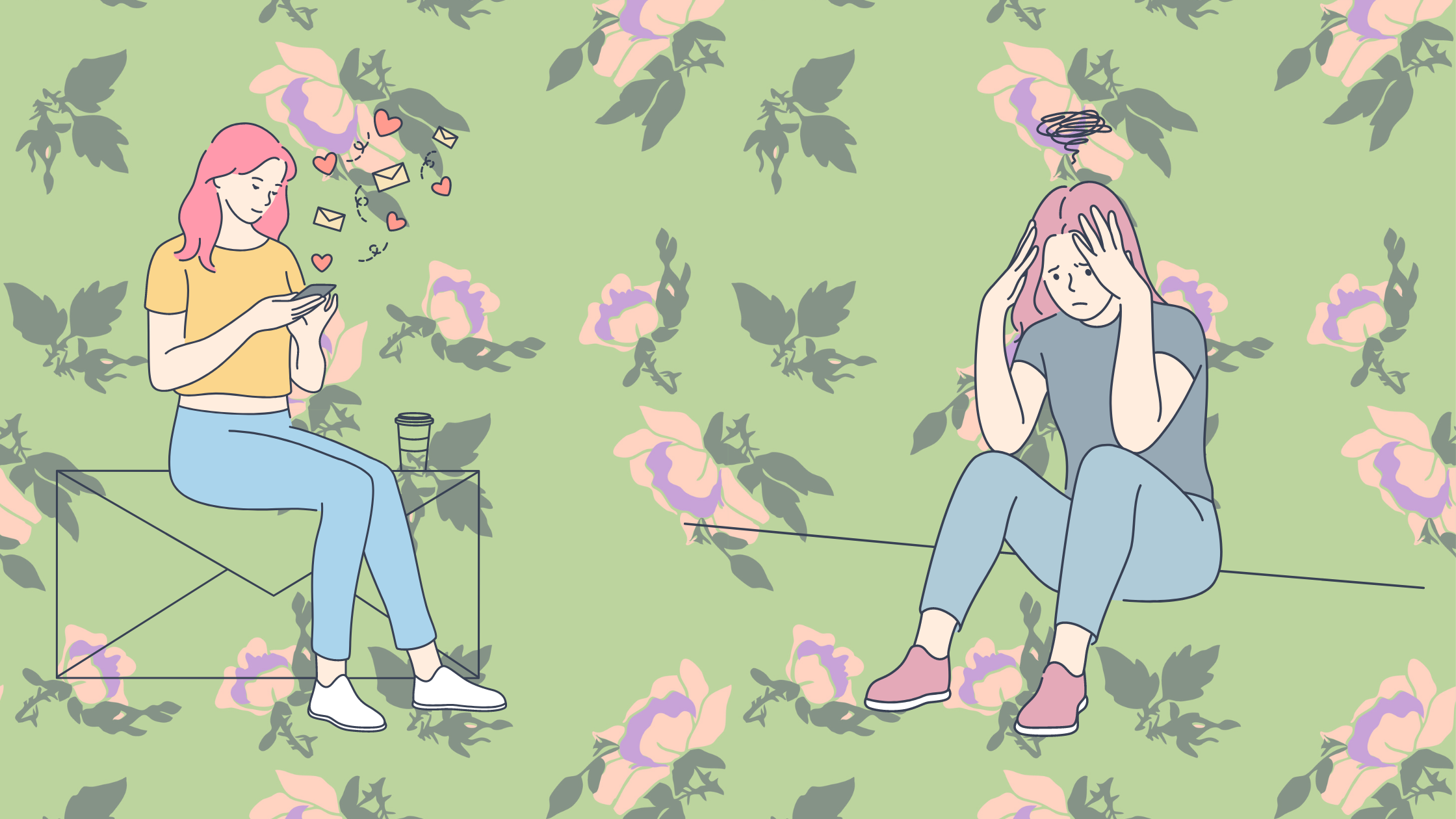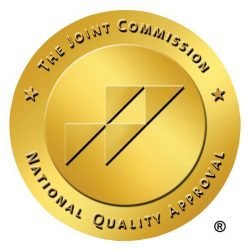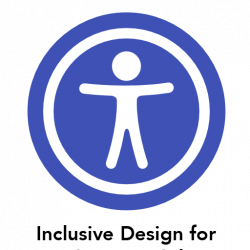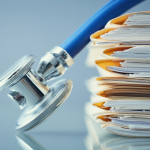
What Is Body Image?
What Is Body Image? | Negative Body Image | Prevalence | Causes | Signs Some One Struggling | Digital Perfection | Body Image and the Insular Cortex | Body Image Distortion vs. Negative Body Image | Race and Body Image | Transgender Community | Weight Stigma | Strategies for Improving Body Image | Mental Health | Healing Process
Body image concerns often play a significant role in the development and maintenance of eating disorders.
What Is Body Image?
Body image refers to an individual’s perception, thoughts, feelings, and attitudes regarding their own body, including its shape, size, appearance, and functionality. It encompasses how people see themselves in the mirror, how they feel about their physical attributes, and how they believe others perceive them. Body image can be positive, negative, or a combination of both, and it plays a significant role in shaping an individual’s self-esteem, self-worth, and overall self-concept.
Positive body image is associated with having a healthy and realistic view of one’s body, feeling comfortable in one’s own skin, and accepting and appreciating one’s body as it is. On the other hand, a negative body image often involves unrealistic, critical, or distorted perceptions of one’s body, leading to feelings of body dissatisfaction, self-consciousness, and even self-loathing.
Body image is a complex and multifaceted concept, influenced by various factors, including
- societal and cultural standards
- diet culture and weight stigma
- media portrayal of idealized bodies
- personal experiences
- individual temperament
Healthy body image is typically associated with better mental and emotional well-being, while negative body image can contribute to issues such as low self-esteem, depression, and the development of eating disorders or other mental health conditions.
Negative Body Image As A Risk Factor for Eating Disorders
Negative body image is a known risk factor for the development of eating disorders because it plays a central role in the psychological and emotional factors that contribute to most of these mental illnesses.
Negative body image often involves dissatisfaction with one’s body size, shape, and appearance. In Western societies, there is a pervasive societal ideal of thinness and an emphasis on the importance of achieving that ideal. When individuals experience dissatisfaction with their bodies, they may internalize these societal ideals and develop a strong desire to become thinner as a means of improving their self-esteem and self-worth.
In an attempt to achieve the desired body shape or size, individuals with negative body image may engage in disordered eating behaviors such as dieting, restriction of food intake, or extreme weight loss behaviors. These behaviors can contribute to developing eating disorders like anorexia nervosa.
In addition to restriction, some individuals with negative body image may engage in binge–eating followed by compensatory measures such as vomiting, excessive exercise, or laxative misuse. People struggling with bulimia nervosa or binge-eating disorder may attempt to manage feelings of guilt, shame, or loss of control related to their body image via their eating habits.
For some individuals struggling with negative body image, eating disorder behaviors may be viewed as coping mechanisms for managing deep-seated emotions, stress, and self-esteem issues. The act of controlling food and body shape can provide a sense of control and distraction from underlying emotional issues.
Negative body image and eating disorders can create a self-perpetuating cycle. The disordered eating behaviors may provide a temporary sense of control or relief, but they can lead to physical and psychological consequences, which, in turn, can further exacerbate negative body image and trigger more disordered eating.
Because negative body image is a powerful contributing factor in the development of most eating disorders, addressing body image concerns is a critical aspect of preventing and treating eating disorders. Early intervention and support for improving body image and self-esteem can help mitigate the risk of developing an eating disorder.
Prevalence of Negative Body Image
Studies show that 42 percent of girls in first through third grade want to be thinner, 81 percent of 10-year-olds are afraid of being fat, and 51 percent of 9- and 10-year-old girls feel better about themselves if they are on a diet.
It is estimated that 20% to 40% of women are dissatisfied with their bodies. Body dissatisfaction is also reported in men; 10% to 30% of men show body dissatisfaction, and 69% of male adolescents are dissatisfied with their bodies in terms of their weight.
Causes of Negative Body Image
One’s relationship with their body can be influenced by various factors, including societal beauty standards, past experiences with bullying or teasing, comparison to others, and personal experiences such as weight gain or loss, aging, pregnancy, and other factors, including
- Social and cultural pressures: Social and cultural ideals of beauty and attractiveness can influence a person’s perception of their own body. The media often portrays unrealistic and narrow standards of beauty, which can create a sense of inadequacy or dissatisfaction with one’s appearance.
- Peer pressure: Negative comments or comparisons from peers, friends, or family members can also contribute to negative body image.
- Childhood experiences: Traumatic or negative experiences during childhood, such as bullying or teasing, can lead to negative body image in adulthood.
- Personal experiences: Personal experiences such as weight gain or loss, illness, injury, pregnancy, or aging can also shape how one’s body is perceived.
- Mental health conditions: Mental health conditions such as depression, anxiety, or obsessive-compulsive disorder (OCD) can also contribute to seeing one’s body in a negative or judgmental way.
- Genetics: Research has suggested that genetics can play a role, with some people being more predisposed to negative body image than others.
Signs That Someone Is Struggling With Negative Body Image
Negative body image can manifest in various ways, and its signs can be both psychological and behavioral. Here are some common signs of a negative body image:
- Frequent Criticism of One’s Own Body: People with a negative body image often engage in self-criticism, constantly finding flaws or imperfections in their appearance.
- Comparison to Others: They frequently compare their own bodies to others, often unfavorably. They may idealize or envy the bodies of celebrities, peers, or models.
- Avoidance of Mirrors or Cameras: A person with a negative body image may avoid mirrors, photographs, or reflective surfaces due to discomfort with their appearance.
- Wardrobe Choices: Dressing to hide or downplay certain body parts is common. Baggy clothing, long sleeves, and layers may be used to conceal perceived flaws.
- Excessive Grooming: Spending an excessive amount of time on grooming and appearance to try to achieve an idealized or unattainable look.
- Social Withdrawal: Avoiding social situations or activities where their bodies may be exposed or judged, such as swimming or going to the beach.
- Unrealistic Weight or Appearance Goals: Setting unattainable goals for weight, shape, or appearance. This can lead to dangerous dieting or exercise habits.
- Dissatisfaction with Food Choices: Feelings of guilt or shame about food choices, leading to restrictive or disordered eating patterns.
- Constant Dieting: Frequent dieting, even when it is unnecessary for health reasons, can be a sign of dissatisfaction with one’s body.
- Preoccupation with Weight or Shape: Constantly thinking about weight, size, or appearance and allowing these thoughts to dominate one’s mental space.
- Emotional Distress: Experiencing sadness, anxiety, or frustration related to body dissatisfaction.
- Decreased Self-Esteem: A negative body image can erode self-esteem and self-worth, leading to feelings of inadequacy.
- Social Comparison: Making unfavorable comparisons to others regarding appearance and feeling inferior as a result.
- Avoidance of Physical Activity: Avoiding physical activity or exercise due to fear of judgment or discomfort in one’s own skin.
- Overuse of Cosmetic Products: Excessive use of cosmetics, skin products, or surgical procedures in an attempt to hide perceived flaws.
It is normal to have occasional negative thoughts or feelings about one’s own body, and it’s not uncommon for people to experience periods of heightened body dissatisfaction. However, when these signs become persistent and lead to emotional distress or interfere with daily life activities, a more serious underlying issue may be present. In this case, support from a mental health professional may be advised.
Digital Perfection
Digital perfection, which often involves the use of photo editing and manipulation software to alter or enhance images, can contribute to distorted body image in several ways:
- Unrealistic Beauty Standards: Digitally perfected images often depict individuals with flawless, idealized features that are unattainable in real life. Exposure to these images can lead people to internalize unrealistic beauty standards, making them feel that their own bodies are inadequate in comparison.
- Social Comparison: When people see digitally perfected images on social media, in advertising, or in magazines, they may compare themselves to these idealized representations. This constant comparison can lead to feelings of inadequacy and dissatisfaction with one’s own appearance.
- Body Dissatisfaction: Regular exposure to digitally perfected images can contribute to body dissatisfaction. Individuals may become more critical of their own perceived flaws, leading to negative feelings about their bodies.
- Low Self-Esteem: The continual exposure to digitally enhanced images can erode self-esteem and self-worth. People may start to feel less confident and less valuable because they don’t match the unrealistic beauty standards they encounter in media.
- Impact on Mental Health: The pressure to achieve digitally perfected beauty standards can increase stress and anxiety, negatively affecting mental health. In extreme cases, it may contribute to developing mental health conditions, including depression and anxiety disorders.
- Encouraging Extreme Measures: Some individuals may resort to extreme measures, such as unhealthy diets, excessive exercise, or even cosmetic procedures, in an attempt to attain the unrealistic beauty ideals portrayed in digitally perfected images. These behaviors can be harmful and lead to physical and psychological health issues.
- Perpetuating a Cycle: Exposure to digitally perfected images can create a cycle where individuals continually strive for an unattainable level of physical perfection. This cycle can reinforce body dissatisfaction and a distorted self-perception.
- Negative Impact on Young People: Young people, in particular, can be vulnerable to the influence of digitally perfected images. Regular exposure at a young age can shape their perceptions of beauty and body image, potentially leading to lifelong body image concerns.
Digitally perfected images are pervasive, especially considering the popularity of filters and social media. This can and does have a significant impact on how individuals perceive themselves and others. To counteract these effects and promote healthier body image, it is important to encourage media literacy, self-acceptance, and a more realistic understanding of the diversity of human bodies. Additionally, regulatory efforts to label or disclose digitally altered images in advertising and media have been proposed in some regions to address this issue.
Body Image And The Insular Cortex
The insular cortex, often simply called the insula, plays a role in body image through its involvement in various bodily sensations, emotional processing, and self-awareness. While the exact mechanisms and connections are complex and not yet fully understood, the insula’s impact on body image can be explained in the following ways:
- Interoception: The insula is heavily involved in interoception, which is the awareness of bodily sensations such as hunger, thirst, temperature, and the perception of internal body states. It processes signals from the body and provides individuals with information about their physiological state. This interoceptive awareness can influence how a person perceives and interprets their own body, including sensations related to body size, shape, and comfort.
- Emotion Processing: The insula is also linked to emotional processing. It helps individuals recognize and interpret emotions within themselves. Negative emotions, such as shame, guilt, or anxiety, can be strongly associated with negative body image. The insula’s role in emotional processing can influence how individuals feel about their bodies and the emotions tied to those perceptions.
- Self-Awareness: The insula contributes to self-awareness, allowing individuals to have a sense of themselves and their bodies in space. It integrates sensory information and helps form a coherent sense of self, which includes the physical self. How the insula processes information related to the body can affect one’s self-concept, including body image.
- Eating Behavior: The insula also plays a role in regulating eating behavior and the experience of satiety or fullness. How the insula processes sensations related to eating, food, and hunger can influence body image, especially in the context of disordered eating or overeating behaviors.
- Body Awareness: The insula contributes to body awareness, enabling individuals to recognize body changes, such as posture or muscle tension. This awareness can affect how individuals perceive their bodies and whether they experience discomfort or satisfaction in their bodies.
- Connectivity: The insula is interconnected with various other brain regions, including the prefrontal cortex, limbic system, and sensory areas. These connections allow it to integrate sensory, emotional, and cognitive information about the body, influencing how individuals perceive their bodies and body image.
Body Image Distortion vs. Negative Body Image
Body image distortion and negative body image are related concepts, but they refer to different aspects of how an individual perceives and feels about their own body.
Body image distortion refers to a perceptual distortion of one’s own body size, shape, or appearance. It involves a misperception of one’s body, such as seeing it as larger or smaller than it actually is.
Negative body image involves a general and overall negative attitude, thoughts, and feelings about one’s own body. It encompasses dissatisfaction with one’s body’s size, shape, and appearance and often involves self-criticism and discomfort.
The key difference between body image distortion and negative body image is that body image distortion specifically relates to a distorted perception of one’s body, often seen in the context of eating disorders. Negative body image, on the other hand, is a more general concept that involves overall dissatisfaction and discomfort with one’s body without necessarily involving a perceptual distortion. Both can have significant psychological and emotional effects on individuals and may lead to unhealthy behaviors and mental health concerns.
Race and Body Image
Body image and racism are two deeply interconnected issues. People of color have historically been marginalized and oppressed in many societies, leading to a range of negative outcomes for their physical and mental health, including poor body image.
- Eurocentric beauty standards: Many societies have long held Eurocentric beauty standards that prize features such as lighter skin, straight hair, and a thin body. These standards can lead to negative body image among people of color who do not fit these ideals and can contribute to internalized racism.
- Objectification and fetishization: People of color are often objectified and fetishized, which can lead to feelings of discomfort and negative body image. For example, Asian women are often fetishized for their perceived exoticism, while Black women are often objectified for their curves and perceived sexual prowess.
- Microaggressions: Microaggressions are subtle forms of discrimination that can negatively impact a person’s mental health. For example: being told that your natural hair is unprofessional or asking where you are really from.
- Colorism: Colorism is a form of discrimination based on skin color, where lighter-skinned individuals are privileged over those with darker skin. Colorism can lead to negative body image among people of color who are darker-skinned and can contribute to internalized racism.
- Historical trauma: Many communities of color have experienced historical trauma, such as slavery, genocide, and colonization. This trauma can contribute to negative body image and poor mental health outcomes.
Body Image and the Transgender Community
Body image challenges are prevalent in the transgender community due to the dissonance between an individual’s gender identity and their physical body. Many transgender individuals experience distress related to the gender assigned to them at birth and may seek medical interventions, such as hormone therapy and gender-affirming surgeries, to align their physical body with their gender identity.
- Dysphoria: Gender dysphoria is a feeling of distress or discomfort that can arise when a person’s gender identity does not match the gender they were assigned at birth. This can manifest as dissatisfaction with one’s body, particularly with sexual characteristics that do not align with their gender identity.
- Access to gender-affirming care: Transgender individuals may face barriers to accessing gender-affirming care, such as long wait times, high costs, and lack of insurance coverage. This can lead to delayed medical interventions and increased distress related to body image.
- Discrimination and stigma: Transgender individuals may experience discrimination and stigma based on their gender identity, which can contribute to negative body image and poor mental health outcomes.
- Social support: Transgender individuals may face social support and acceptance challenges, contributing to feelings of isolation and poor body image.
- Lack of representation: Transgender individuals may lack representation in media and society, contributing to feelings of invisibility and marginalization.
Weight Stigma and Body Image
Weight stigma can have a significant impact on body image. Weight stigma refers to the negative attitudes and beliefs people hold towards individuals perceived to be overweight or obese. This can include discrimination, stereotyping, and prejudice.
- Internalized weight stigma: People who experience weight stigma may internalize these negative beliefs, leading to negative self-talk and a poor body image.
- Shame and guilt: Weight stigma can lead to shame and guilt about one’s body and contribute to a cycle of negative emotions and behaviors.
- Dieting and weight cycling: Weight stigma can lead to a desire to lose weight, resulting in restrictive dieting and weight cycling. These behaviors can contribute to negative body image and poor physical and mental health outcomes.
- Physical health consequences: Weight stigma has been linked to negative physical health outcomes such as increased risk for heart disease, diabetes, and other chronic illnesses. These physical health consequences can further contribute to poor body image and negative emotions.
- Mental health consequences: Weight stigma can also lead to poor mental health outcomes such as depression, anxiety, and low self-esteem.
Strategies For Improving Body Image
Self-Acceptance and Self-Compassion
- Practice self-acceptance by recognizing that your body is unique and has value beyond appearance.
- Cultivate self-compassion by treating yourself with kindness and understanding, particularly when you have negative thoughts about your body.
Challenge Negative Thoughts
- Learn to identify and challenge negative or distorted thoughts about your body. Are these thoughts based on facts, or are they influenced by unrealistic societal standards?
Media Literacy
- Be critical of media portrayals of idealized bodies. Remember that many images are heavily edited and do not represent reality.
Positive Affirmations
- Use positive affirmations to counteract negative thoughts. Remind yourself of your positive qualities and strengths that have nothing to do with your appearance.
Realistic Goals Rooted In Body Acceptance
- Set realistic and achievable goals for yourself unrelated to your appearance, such as personal growth, skills, or hobbies.
- Meet yourself where you are on your body-acceptance journey. Body positivity is only one form of body acceptance. Body neutrality may be a more inclusive, realistic approach, particularly for individuals whose relationships with their bodies are complicated by chronic illness, gender dysphoria, or disability.
Nourishing Movement
- Engage in physical activity or exercise not solely for weight control but for overall health and well-being.
- Examine your motivations for exercise.
Mindful Eating
- Practice mindful, intuitive eating; pay attention to your body’s hunger and fullness cues rather than following strict, fad diets.
- Try an all-inclusive, judgment-free approach to eating.
Professional Support
- Consider seeking support from a therapist, counselor, or mental health professional specializing in body image and eating concerns. They can help you address deeper emotional issues related to your body image.
Support Groups
- Seek out support groups or communities where you can connect with others who are working on improving their body image. Sharing experiences and strategies can be beneficial.
Avoid Body Comparison
- Try to limit comparing yourself to others, especially through social media. Unfollow or mute accounts that trigger negative feelings about your body.
Education and Awareness
- Educate yourself about the diverse range of body types and the importance of body diversity. Understanding that there is no one “perfect” body can be empowering.
Mental Health and Body Image
Negative body image can have serious mental health consequences, including:
- Depression: Negative body image is strongly associated with symptoms of depression, such as low mood, loss of interest in activities, and feelings of hopelessness.
- Anxiety: Negative body image can lead to anxiety, worry, and fear about one’s appearance, which can interfere with daily activities and relationships.
- Eating disorders: Negative body image is a significant risk factor for developing eating disorders such as anorexia, bulimia, and binge eating disorder.
- Substance use disorders: Negative body image has been linked to substance use issues and addiction, as individuals may use drugs or alcohol as a coping mechanism to deal with negative emotions.
- Low self-esteem: Negative body image can lead to low self-worth and poor self-esteem, impacting all aspects of a person’s life.
- Social isolation: Negative body image can lead to social isolation and withdrawal from social situations, negatively impacting relationships and overall well-being.
The Healing Process
Healing negative body image is a journey and may require ongoing effort. Progress may be gradual, but with persistence and the right support, you can develop a healthier and more positive relationship with your body. If negative body image begins to impact your eating behaviors, relationships, or mental health, it is important to seek help before the issue worsens. If body image disturbances are impacting your relationship with food or sense of self-worth, please reach out to our team today to find out if eating disorder treatment is right for you.
Sources:
Cash, T. F. (2012). Cognitive-behavioral perspectives on body image. In T. F. Cash & L. Smolak (Eds.), Body Image: A Handbook of Science, Practice, and Prevention (2nd ed., pp. 39-47). Guilford Press.
Fardouly, J., Diedrichs, P. C., Vartanian, L. R., & Halliwell, E. (2015). Social comparisons on social media: The impact of Facebook on young women’s body image concerns and mood. Body Image, 13, 38-45. https://doi.org/10.1016/j.bodyim.2014.12.002
Grogan, S. (2017). Body image: Understanding body dissatisfaction in men, women and children (3rd ed.). Routledge.
Haines, J., Neumark-Sztainer, D., & Eisenberg, M. E. (2006). Body dissatisfaction and disordered eating in adolescence and young adulthood: Does follow-up matter? Journal of Adolescent Health, 39(2), 224-231. https://doi.org/10.1016/j.jadohealth.2005.12.001
Puhl, R. M., & Heuer, C. A. (2009). The stigma of obesity: A review and update. Obesity, 17(5), 941-964. https://doi.org/10.1038/oby.2008.636
van den Berg, P., & Thompson, J. K. (2017). Body image and sexual orientation: The intersection of gender and sexual minority status. In T. F. Cash & L. Smolak (Eds.), Body Image: A Handbook of Science, Practice, and Prevention (3rd ed., pp. 343-350). Guilford Press.
White, H. J., & Varnado-Sullivan, P. J. (2017). Eating disorders and body image in transgender people. In T. F. Cash & L. Smolak (Eds.), Body Image: A Handbook of Science, Practice, and Prevention (3rd ed., pp. 351-357). Guilford Press.
Grabe, S., Ward, L. M., & Hyde, J. S. (2008). The role of the media in body image concerns among women: A meta-analysis of experimental and correlational studies. Psychological Bulletin, 134(3), 460-476. https://doi.org/10.1037/0033-2909.134.3.460
Hall, W. J., Chapman, M. V., Lee, K. M., Merino, Y. M., Thomas, T. W., Payne, B. K., & Eng, E. (2015). Implicit racial/ethnic bias among health care professionals and its influence on health care outcomes: A systematic review. American Journal of Public Health, 105(12), e60-e76. https://doi.org/10.2105/AJPH.2015.302903
Harrell, S. P. (2000). A multidimensional conceptualization of racism-related stress: Implications for the well-being of people of color. American Journal of Orthopsychiatry, 70(1), 42-57. https://doi.org/10.1037/h0087722
Hooks, B. (1992). Black looks: Race and representation. South End Press.
Hsu, R. (2006). The seductive power of the Asian American woman: “Yellow fever” fetish and Asian American women’s sexuality. Journal of Communication Inquiry, 30(2), 198-221. https://doi.org/10.1177/0196859906288125
Lewis, T. T., & Neighbors, H. W. (2005). Self-esteem and body satisfaction among African American, Latina, and white women. Journal of Social Psychology, 145(2), 221-240. https://doi.org/10.3200/SOCP.145.2.221-240
Preston C, Ehrsson HH. Illusory Obesity Triggers Body Dissatisfaction Responses in the Insula and Anterior Cingulate Cortex. Cereb Cortex. 2016 Dec;26(12):4450-4460. doi: 10.1093/cercor/bhw313. Epub 2016 Oct 12. PMID: 27733537; PMCID: PMC5193143.
Yancey, A. K., Ortega, A. N., & Kumanyika, S. K. (2006). Effective recruitment and retention of minority research participants. Annual Review of Public Health, 27, 1-28. https://doi.org/10.1146/annurev.publhealth.27.021405.102113
Sources:
Cash, T. F. (2012). Cognitive-behavioral perspectives on body image. In T. F. Cash & L. Smolak (Eds.), Body Image: A Handbook of Science, Practice, and Prevention (2nd ed., pp. 39-47). Guilford Press.
Fardouly, J., Diedrichs, P. C., Vartanian, L. R., & Halliwell, E. (2015). Social comparisons on social media: The impact of Facebook on young women’s body image concerns and mood. Body Image, 13, 38-45. https://doi.org/10.1016/j.bodyim.2014.12.002
Grogan, S. (2017). Body image: Understanding body dissatisfaction in men, women and children (3rd ed.). Routledge.
Haines, J., Neumark-Sztainer, D., & Eisenberg, M. E. (2006). Body dissatisfaction and disordered eating in adolescence and young adulthood: Does follow-up matter? Journal of Adolescent Health, 39(2), 224-231. https://doi.org/10.1016/j.jadohealth.2005.12.001
Puhl, R. M., & Heuer, C. A. (2009). The stigma of obesity: A review and update. Obesity, 17(5), 941-964. https://doi.org/10.1038/oby.2008.636
van den Berg, P., & Thompson, J. K. (2017). Body image and sexual orientation: The intersection of gender and sexual minority status. In T. F. Cash & L. Smolak (Eds.), Body Image: A Handbook of Science, Practice, and Prevention (3rd ed., pp. 343-350). Guilford Press.
White, H. J., & Varnado-Sullivan, P. J. (2017). Eating disorders and body image in transgender people. In T. F. Cash & L. Smolak (Eds.), Body Image: A Handbook of Science, Practice, and Prevention (3rd ed., pp. 351-357). Guilford Press.
Grabe, S., Ward, L. M., & Hyde, J. S. (2008). The role of the media in body image concerns among women: A meta-analysis of experimental and correlational studies. Psychological Bulletin, 134(3), 460-476. https://doi.org/10.1037/0033-2909.134.3.460
Hall, W. J., Chapman, M. V., Lee, K. M., Merino, Y. M., Thomas, T. W., Payne, B. K., & Eng, E. (2015). Implicit racial/ethnic bias among health care professionals and its influence on health care outcomes: A systematic review. American Journal of Public Health, 105(12), e60-e76. https://doi.org/10.2105/AJPH.2015.302903
Harrell, S. P. (2000). A multidimensional conceptualization of racism-related stress: Implications for the well-being of people of color. American Journal of Orthopsychiatry, 70(1), 42-57. https://doi.org/10.1037/h0087722
Hooks, B. (1992). Black looks: Race and representation. South End Press.
Hsu, R. (2006). The seductive power of the Asian American woman: “Yellow fever” fetish and Asian American women’s sexuality. Journal of Communication Inquiry, 30(2), 198-221. https://doi.org/10.1177/0196859906288125
Lewis, T. T., & Neighbors, H. W. (2005). Self-esteem and body satisfaction among African American, Latina, and white women. Journal of Social Psychology, 145(2), 221-240. https://doi.org/10.3200/SOCP.145.2.221-240
Yancey, A. K., Ortega, A. N., & Kumanyika, S. K. (2006). Effective recruitment and retention of minority research participants. Annual Review of Public Health, 27, 1-28. https://doi.org/10.1146/annurev.publhealth.27.021405.102113
Our Recommended Articles
Start the road to recovery with Alsana.










